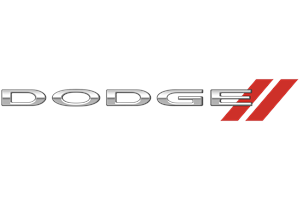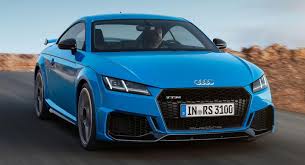


This edition of the Dodge Charger Daytona 392 is the 8 speed / Auto version and was first brought out in 2017. This was at around the same time as the introduction of the 2018 Bugatti Chiron Sport 8.0L W16 Quad Turbo and the 2018 Bugatti Divo 8.0L W16 64 Valve Turbo.This particular Dodge Charger has a 6410cc Naturally Aspirated Petrol powerplant with 8 cylinders in a V formation.
The Charger shares its Petrol V8 engine configuration with the likes of the 2023 Dodge Challenger SRT Demon 170 and the 2023 Ferrari SF 90 XX Spider 4.0 V8 Turbo. If you're looking for other fast cars which share the Charger's Rear Wheel Drive, Saloon combination then how about the 1982 Fiat X1/9 1.5 8V or the 1965 Aston-Martin DB6 1965.
Weighing in at 1994 kgs (4396 lbs) this makes the Dodge Charger Daytona 392 in the same weight category as the 2022 BMW 8 Series M850i xDrive 4.4 V8 Turbo G15 or the give or take 50kg.
In terms of power the 6410cc 16V V8 engine produces 485 bhp (361 kW) @ 6100 rpm similar to the 2024 Ford Mustang Dark Horse 5.0 V8 (500 bhp) or the 2023 Porsche Cayenne S 4.0 V8 Turbo (467 bhp).
The Naturally Aspirated V8 throws out 475 lb-ft (644.0 Nm) @ 4100 rpm placing it with cars of similar torque performance figures such as the 2024 Chevrolet Corvette E-Ray 6.2 V8 Petrol Hybrid C8 (470 lb-ft) or the 2023 Chevrolet Corvette Z06 5.5 V8 C8 (460 lb-ft).
If one combines the weight with power or torque performance for the Dodge Charger you can get a better idea of it's real world performance.
![BMW 3 Series M3 CRT E90 - [2011] image BMW 3 Series M3 CRT E90 - [2011] image](/editionimages/1002.jpg)
The 2011 BMW 3 Series M3 CRT E90 (268.2 bhp per ton) has similar Bhp Per Ton stats as the Dodge Charger.
The Dodge Charger has a Power to weight ratio of 243.2 bhp per ton and 238.2 lb-ft per ton. Bhp Per Ton figures of the 2017 Charger competing with the 2011 BMW 3 Series M3 CRT E90 (268.2 bhp per ton) or the 2013 Alfa-Romeo 4C 1.8 Turbo (268.1 bhp per ton).
If you agree with the late great Carroll Shelby then arguably an even better indicator of potential performance, Torque. Use weight as well and you end up with - Torque per ton, with the Dodge Charger generating around 238.2 lb-ft per ton. If you're curious as to what other cars have as much torque to weight then look no further than the 1998 Bentley Continental T 6.8 V8 Turbo (263.2 lb-ft per ton) or the 2009 Jaguar XK R 5.0 Supercharged (262.9 lb-ft per ton).
With a 0-60mph time of 4.80 secs or a 0-100km/h (0-62mph) of 5.0 secs, this made the Dodge Charger Daytona 392 as fast as the 2021 Porsche Taycan 4 Cross Turismo (4.80 secs) the 2020 Audi TT S Turbo 50 TFSI (4.80 secs) the 2018 Rolls-Royce Cullinan 6.7 V12 Turbo (4.80 secs) the or the 2017 Maserati GranCabrio Sport 4.7 V8 (4.80 secs). This Dodge Charger Daytona 392 is also faster than the 2023 Toyota Corolla GR Morizo Edition 1.6 Turbo (4.90 secs) the 2022 Mini Cooper Countryman John Cooper Works 2.0 Turbo (4.90 secs) the 2021 Ford Mustang GT 5.0 V8 (4.90 secs) the and the 2020 Honda Civic Type R 2.0 16V Touring (4.90 secs).
When talking about the performance of the Dodge Charger on the drag strip it can reach a quarter mile in an estimated 13.19 secs @ 103.7 mph. Similar performance down the quarter mile can be found with the the 2007 Maserati GranTurismo 4.2 V8 (13.14 secs), the 1969 Lamborghini Espada S II (13.15 secs), and the 1969 Oldsmobile 4-4-2 7.4 V8 Sports Coupe 365 (13.15 secs).
Modern performance cars are often artificially restricted to 155mph. The 2017 version of the Dodge Charger Daytona 392 has a maximum speed of 150mph.
If maxing out your car on the AutoBahn is your thing and you're wondering what's faster than the 2017 Dodge Charger Daytona 392 then how about the 2013 Porsche Panamera Diesel 3.0 V6 Turbo (161 mph), the 2013 Porsche Panamera 3.6 V6 (161 mph), or the 2011 Radical SR3 SL 2.0 Turbo (161 mph).










Jaguar F Type R Convertible 5.0 V8 Supercharged
Engine: Supercharged Petrol | 5000cc 32v V8
Top Speed: 186 mph
0-60mph: 3.50 seconds

Renault Megane RS 1.8 Turbo 300 Trophy EDC
Engine: Turbo Petrol | 1798cc 16v St4
Top Speed: 260.7 kph
0-100kph: 5.8 seconds



















